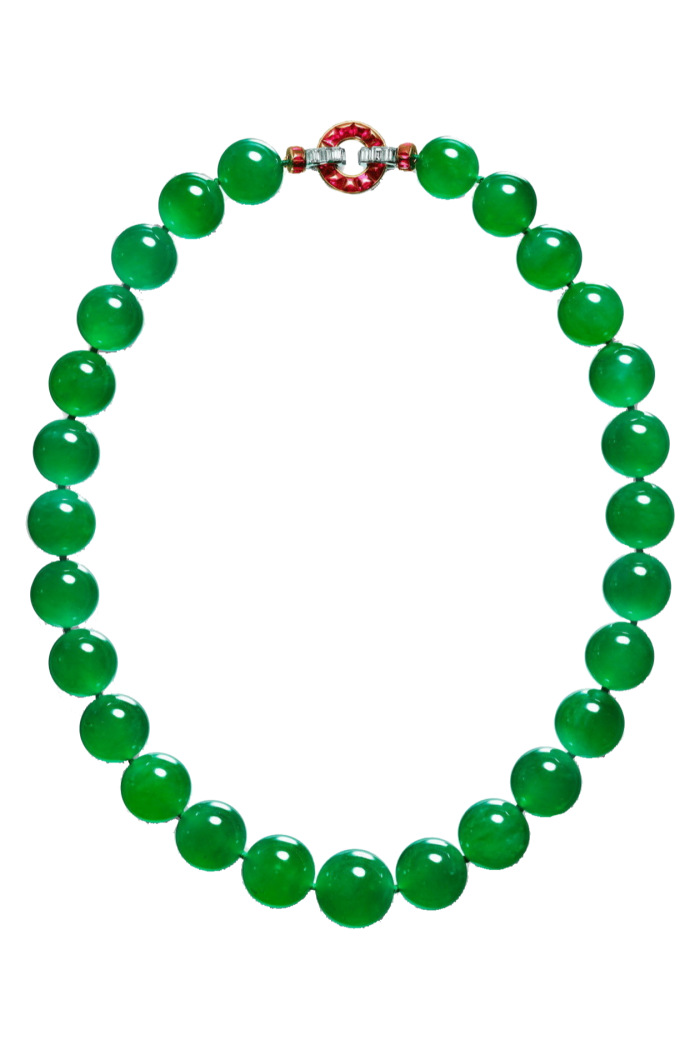Jewellers assess benefits of maintaining proper archives

Next month, the Louvre in Abu Dhabi will host the 40th monographic exhibition of Cartier jewellery titled Cartier, Islamic Inspiration and Modern Design — the third after those in Paris and Dallas focusing on Cartier and Islamic art, but with additional documents and items resulting from the house’s continuous research.
The number and pace of such jewellery exhibitions in museums and galleries has increased since the end of pandemic-related restrictions. Last summer, Tiffany & Co had a 400-piece show at the Saatchi Gallery in London, followed by Van Cleef & Arpels with its Art of Movement exhibition at the Design Museum. Chaumet has also just opened the Paris private salon above its boutique to the public for Un Âge d’Or (A Golden Age), showcasing the house’s jewels from the 1970s.
Such exhibitions are possible only thanks to businesses investing in their archives, with specialists poring over documents, organising ledgers and buying back historically significant pieces. Exhibitions of original pieces show how, in jewellery, the present and the past are intertwined: business is all about enticing with the new, but desirability is burnished by elevating the heritage.
While the archive has become, for many, a strategic priority only in recent years, others have recognised its importance from an early stage.
An archiving policy has been in place at Cartier since the house’s founding in 1847. In the early 1900s, the practice of taking real-scale photographs became mandatory for all its major creations. However, the turning point was in the 1970s when Cartier identified its archive as an asset and reorganised it, says Pierre Rainero, Cartier’s director of style, image and heritage. In 1983, resources were allocated to create the Cartier Collection, an ensemble of significant pieces, which, this year, celebrates its 40th anniversary. Among the approximately 3,500 prized items are a mystery clock from the early 1900s, and the jade necklace that once belonged to Barbara Hutton, which Cartier bought for $27.4mn at a Sotheby’s auction in 2014.

Rainero says the objective was to share the “artistic dimension and the exceptional craftsmanship” with as many people as possible, right from the start. This led Cartier to discard plans for its own museum in favour of exhibitions taking place worldwide that would offer greater visibility. “Cartier does not curate its own exhibitions, which means that we want and value an outside view of our production coming from museum curators,” says Rainero. He notes how the exhibitions are initiated by the cultural institutions. “Museum curators appreciate us because, when they visit our archives, they find all possible documents linked to the pieces,” adds Pascale Lepeu, curator of the Cartier Collection.
“Exhibitions are about connecting a wider audience to the brand, bringing us closer to these otherwise distant objects and rarefied worlds,” says Rebecca Robins, a brand adviser and author. “They are about demonstrating the influence of the brand over time. It’s about building cultural capital,” she adds.
But Bernstein’s luxury analyst Luca Solca also sees a financial logic in them. He says archives and public showcases increase a brand’s secondary market value and provide “trustworthiness, and almost a claim to gentrification as if new money is desiring old money’s security”.
Van Cleef & Arpels and Boucheron also began their archiving policy early but it became a strategic focus only recently, with collections totalling about 2,200 and 800 items, respectively.
“Although the collection is 100 years old and we have always kept an eye on pieces on the auction market, the department has been more active over the past seven years,” says Boucheron chief executive Hélène Poulit-Duquesne. Boucheron’s historical pieces are regularly exhibited alongside contemporary work in the house’s short temporary travelling exhibitions named La Maison. Moreover, the company’s drawings and antique pieces inform Histoire de Style, a high jewellery collection which every year celebrates elements from the company’s archive, such as the Question Mark necklace in 2020 or the late Queen Elizabeth II’s brooch this year.
Other jewellers have had success with bringing historical pieces back the shop floor. Founded in 1613, Mellerio dits Meller lays claim to the oldest jewellery archive of Place Vendôme. Besides sketches, ledgers and drawings, it also comprises display cases by Fourdinois, a cabinetmaker from the mid-1800s, and the Marmotte — the trunk that Jean-Baptiste Mellerio wore on his back when selling jewellery on the streets.

But a recent reorganisation of Mellerio’s archives led to a remarkable effect on sales.
In a bid to tell the history of the house with a bejewelled symbol associated with a muse (a cross for 17th-century Marie de’ Medici, a flower for 18th-century Marie Antoinette, a dragon’s wing for the courtesans of the 19th century), some inspiring drawings were moved to the boutique floor, while downstairs, Mellerio created a mini-museum.
Creative director Laure-Isabelle Mellerio says clients feel an instant familiarity, “since everything I create is inspired by our archive.” She also often witnesses customers, impressed by the archives, who then buy something new.
Similar tales are often recounted by the executives at Bulgari which, since 2014, has had a permanent exhibition space in its boutique in Rome. At Garrard, chief executive Joanne Milner proudly shows her clients the first Garrard ledger, which details the origins of the brand’s royal heritage. “The initial entry is for the Prince of Wales, who became our first royal patron in 1735, the year in which Garrard was founded,” she says.
Chaumet also shows off its own famous clientele. In 2020, it opened its document room to researchers, curators and selected clients. “When clients come here [the archives room on 12 Place Vendôme] and they see the drawings, the names of the clients on the ledger, Empress Eugenie, Picasso, Eiffel, they see all our history,” says archivist Claire Gannet.
“They are not just buying a product, but they are buying a piece of history.”
https://www.ft.com/content/1f911d52-9969-4c89-a178-268c94c29c78 Jewellers assess benefits of maintaining proper archives



